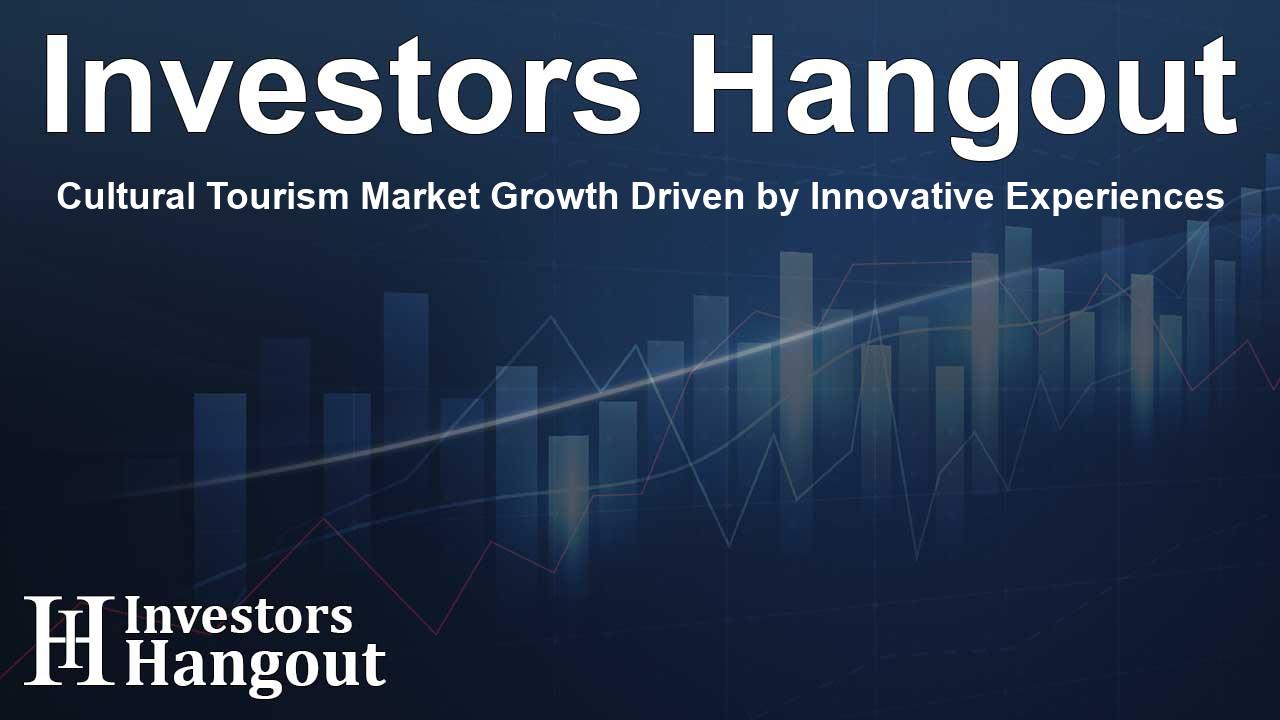Cultural Tourism Market Growth Driven by Innovative Experiences

Cultural Tourism Market Dynamics
The cultural tourism sector is experiencing robust growth, with projections indicating an increase of USD 6.67 billion from the period of 2024 to 2028. This growth trajectory, estimated at a compound annual growth rate (CAGR) of 17.32%, is significantly influenced by a growing public interest in cultural experiences and stress relief initiatives. Key to this transformation is the rising demand for immersive technologies such as Augmented Reality (AR) and Virtual Reality (VR), which enhance engagement with cultural attractions.
Market Drivers and Trends
Today, travelers are increasingly seeking authentic and meaningful interactions with local cultures. Traditional attractions, including historic sites, museums, and art galleries, remain popular, but there is a marked shift towards experiential tourism. Off-the-beaten-path destinations are gaining traction as travelers look for unique, authentic experiences that showcase local customs and traditions. Sustainable travel practices are also becoming essential. Companies are responding to consumer demand by offering eco-friendly initiatives that promote conservation and benefit local communities.
Impact of Technology in Cultural Tourism
Technological advancements are reshaping the cultural tourism landscape. AR and VR technologies are becoming integral tools, providing travelers with interactive experiences that enhance their understanding of cultural landmarks. For instance, AR applications allow users to see virtual reconstructions of historical sites through their smartphones, while VR headsets enable full immersion into these environments. This technological evolution not only enriches the visitor's experience but also increases accessibility to diverse cultures.
Challenges Facing the Market
Despite the promising growth of the cultural tourism market, challenges such as overtourism pose significant risks. Popular destinations often see visitor numbers exceed their capacity, resulting in congestion, environmental degradation, and a decline in the quality of the visitor experience. The strain on local resources from excessive tourism can lead to the deterioration of cultural sites, undermining the authenticity that attracts travelers in the first place.
Consumer Preferences and Behavior
As consumers pivot toward more meaningful travel experiences, they increasingly prioritize direct engagement with local communities. Traditional tourist offerings are being complemented by experiences such as culinary tours, workshops, and cultural festivals. Social media and travel platforms have made it easier for people to discover and partake in these unique opportunities, contributing to the growth of cultural tourism. Furthermore, the middle class's desire for affordable yet enriching travel options supports the industry's expansion as budget airlines and alternative accommodations become more accessible.
Segment Analysis
The cultural tourism market is segmented into domestic and international cultural tourism, as well as service types including cultural eco-tourism and indigenous cultural tourism. Each segment presents distinct opportunities and challenges, with a focus on delivering experiences that resonate with travelers seeking to connect with heritage and culture. Such segmentation allows for targeted marketing strategies that can better address consumer needs in various regions.
Regional Market Insights
Growth in the cultural tourism sector is not uniform across the globe. Regions such as Europe represent the largest share of the market, contributing roughly 40% of the overall market revenue. Countries renowned for their rich histories and cultural attractions, including China, Japan, Italy, and France, play pivotal roles in this sector's growth. As international travel resumes and expands, these key markets are expected to rebound strongly, attracting visitors who seek both cultural enrichment and enjoyment.
Conclusion and Future Outlook
The cultural tourism market is set on a promising path driven by consumer demand for unique experiences and technological innovation. As companies adapt to changing preferences, an increased emphasis on sustainability and authentic engagement will likely define the industry's landscape in the years to come. For both travelers and cultural institutions, this evolution presents an exciting future where understanding and appreciation of diverse cultures takes center stage.
Frequently Asked Questions
What factors are contributing to the growth of the cultural tourism market?
The cultural tourism market is growing due to increasing consumer demand for authentic experiences, technological innovations, and a shift towards sustainable travel practices.
How does technology influence cultural tourism?
Technologies like AR and VR offer immersive experiences that enhance visitor engagement, allowing tourists to interact with cultural landmarks in new and engaging ways.
What challenges does the cultural tourism industry face?
Overtourism presents significant challenges, as popular destinations struggle with overcrowding, which can harm both the environment and visitor satisfaction.
Which regions dominate the cultural tourism market?
Europe is currently the leading region in the cultural tourism market, accounting for a substantial portion of global revenue, with numerous countries renowned for their historical attractions.
How are companies adapting to consumer preferences in cultural tourism?
Companies are focusing on unique offerings such as culinary experiences and cultural festivals, alongside eco-friendly practices to meet the evolving needs of travelers seeking meaningful connections.
About The Author
Contact Henry Turner privately here. Or send an email with ATTN: Henry Turner as the subject to contact@investorshangout.com.
About Investors Hangout
Investors Hangout is a leading online stock forum for financial discussion and learning, offering a wide range of free tools and resources. It draws in traders of all levels, who exchange market knowledge, investigate trading tactics, and keep an eye on industry developments in real time. Featuring financial articles, stock message boards, quotes, charts, company profiles, and live news updates. Through cooperative learning and a wealth of informational resources, it helps users from novices creating their first portfolios to experts honing their techniques. Join Investors Hangout today: https://investorshangout.com/
The content of this article is based on factual, publicly available information and does not represent legal, financial, or investment advice. Investors Hangout does not offer financial advice, and the author is not a licensed financial advisor. Consult a qualified advisor before making any financial or investment decisions based on this article. This article should not be considered advice to purchase, sell, or hold any securities or other investments. If any of the material provided here is inaccurate, please contact us for corrections.
